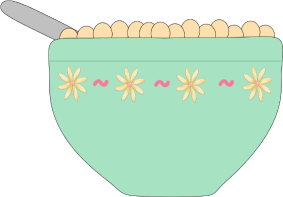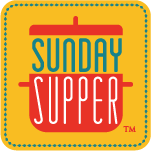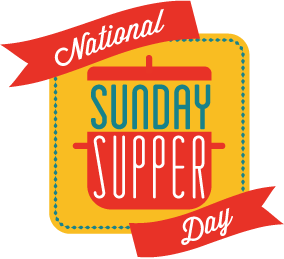
How big a deal is boxed cereal? More than 90 percent of U.S. households enjoy it with more than 2 billion boxes sold per year.
That’s a lot of cereal.
DietDetective.com and Dr. Charles Platkin, HUNTER College and City University of New York School of Public Health lead a Cereal Investigation.
The cereal investigation ranks and provides each of the 301 cereals a health score (using 19 criteria), the investigation also includes separate rankings for calories, sodium and sugar, as well as investigation averages.
These are the lowest-ranked unhealthiest cereals based on the DietDetective.com’s findings.
1. General Mills Monsters Boo Berry (Tied for last place)
1. Kellogg’s Rice Krispies Treats (Tied for last place)
1. Post Fruity Pebbles (Tied for last place)
1. Post Summer Berry Pebbles (Tied for last place)
1. General Mills Chocolate Lucky Charms (Tied for last place)
6. Kellogg’s Rice Krispies Cocoa Krispies
7. General Mills Cinnamon Toast Crunch Frosted Toast Crunch
8. Kellogg’s Frosted Flakes
9. Quaker Honey Graham Oh’s
10. Kellogg’s Granola Low-fat Granola Multigrain with Raisins
DietDetective.com’s Top 10 “Healthiest” Cereals
These are the highest-ranked healthiest cereals based on the DietDetective.com’s findings.
1. Nature’s Path Organic Millet Puffs
2. Barbara’s Shredded Wheat
3. Kashi Whole Wheat Biscuits Autumn Wheat (Tied for 3rd place)
3. Quaker Oats Old Fashioned (Tied for 3rd place)
5. Nature’s Path Oatmeal Gluten Free Selections Homestyle
6. Kashi 7 Whole Grain Cereals Puffs
7. Post Shredded Wheat Original Spoon Size
8. Nature’s Path Qi’a Superfood Chia, Buckwheat & Hemp Original Flavor
9. Post Shredded Wheat Spoon Size Wheat’n Bran
10. Nature’s Path Original Hot Oatmeal
So should you stop eating boxed cereal? Not necessarily. According to a study reported in the American Journal of Epidemiology, it is better to eat something than start your day on an empty stomach. People who skip breakfast are 4.5 times more likely to be overweight than those who don’t.
Cereal Healthy Eating Tips
*Not For the Carb-Minded: Researchers have demonstrated that a “low-carbohydrate diet was more effective for weight loss and cardiovascular risk factor reduction than the low-fat diet.”
*Don’t be Fooled by Health Claims on the Package: Yes, cereals are nutritionally dense and can be very filling — especially the ones made from whole grains. However, just because they have extra vitamins and minerals doesn’t mean you can eat as much as you want. Even if a cereal boasts “High Fiber,” “Excellent Source of Calcium,” or “Organic,” it may still contain a significant amount of sugar, sodium, calories and even fat.
*Added Fiber: Many cereals have added fiber; check the label for chicory root/inulin, maltodextrin, polydextrose, soy hulls, wheat fiber, oat fibers and sorghum fibers. Many researchers believe that added fiber doesn’t have the same health benefits as naturally occurring fiber in whole foods. Bottom-line, don’t just look at the amount of fiber on the food label; you need to also check the ingredients list.
*The Fewer Ingredients the Better: Choose the cereals (and all your foods) that have the fewest ingredients, and make sure they’re names you can pronounce.
*Avoided Added Protein: Cereal companies are trying their best to overcome the low-carb craze and capitalize on the idea that protein keeps you full, by adding protein to cereal. Don’t be fooled: it’s not the same as eating eggs or egg whites and other low calorie protein sources. However, cereals with nuts are a great source of protein.
*Whole Grains are Important, but not the Only Thing That’s Important: Look for whole grains as the first ingredient on the food label. These could include: brown rice, buckwheat, bulgur, graham flour, oatmeal, quinoa, rolled oats, whole-grain barley, whole-grain corn, whole oats, whole rye, whole wheat and wild rice.
*Avoid “Fortified with Vitamins”: Research is demonstrating that adding vitamins to cereals is not the same as getting them from whole foods. Looking for vitamin C? Eat an apple.
*Stick with Low Calories: Choose cereals that are low in calories per gram. Divide the number of calories in the serving by the weight in grams listed on the cereal box.
*Watch the Sodium: Many cereals are high in sodium; the Institute of Medicine recommends no more than 1500mg of sodium per day.
*Avoid Added Sugar: According to the Centers for Disease Control and Prevention (CDC), the term “added sugar” is defined as any “sweeteners added to processed and prepared foods.” While many sugars are found naturally in foods, such as milk, fruit, vegetables and grains, it’s the sugars added to many of the foods we eat (by food companies) that we have to watch out for. .
When you read a food label, look out for: Corn Syrup, Cane Sugar, Brown Sugar, Brown Sugar Syrup, Dextrin, Dextrose, Dried Cane Syrup, Glucose, Fructose, High-Fructose Corn Syrup, Honey, Invert Sugar, Lactose, Maltodextrin, Maltose, Mannitol, Molasses, Natural Sweeteners, Polydextrose Raw Sugar, Sucrose Syrup, Turbinado Sugar, Xylitol, Organic Evaporated Cane Juice, Evaporated Cane Juice, Evaporated Cane Juice Crystals, Evaporated Cane Sugar, and Maple Syrup.
*Serving Size Matters: Remember cereal is measured by volume not density. In theory, the more dense the cereal (the more grams per serving), the less you are likely to eat. So, when you’re trying to pick the best cereal, check the weights listed next to the serving size (grams) and compare the calories per gram by dividing the calories by the number of grams per serving.
*Skim It: Choose skim milk to go with your cereal. You get essentially the same nutrients from skim milk as you do from drinking whole milk, minus the fat.
The preceding figures are a summary of the rankings. You can view the full report here: http://www.dietdetective.com/cereal.pdf
























2 Responses to Top 10 Unhealthiest Cereals. Is Yours on the List?